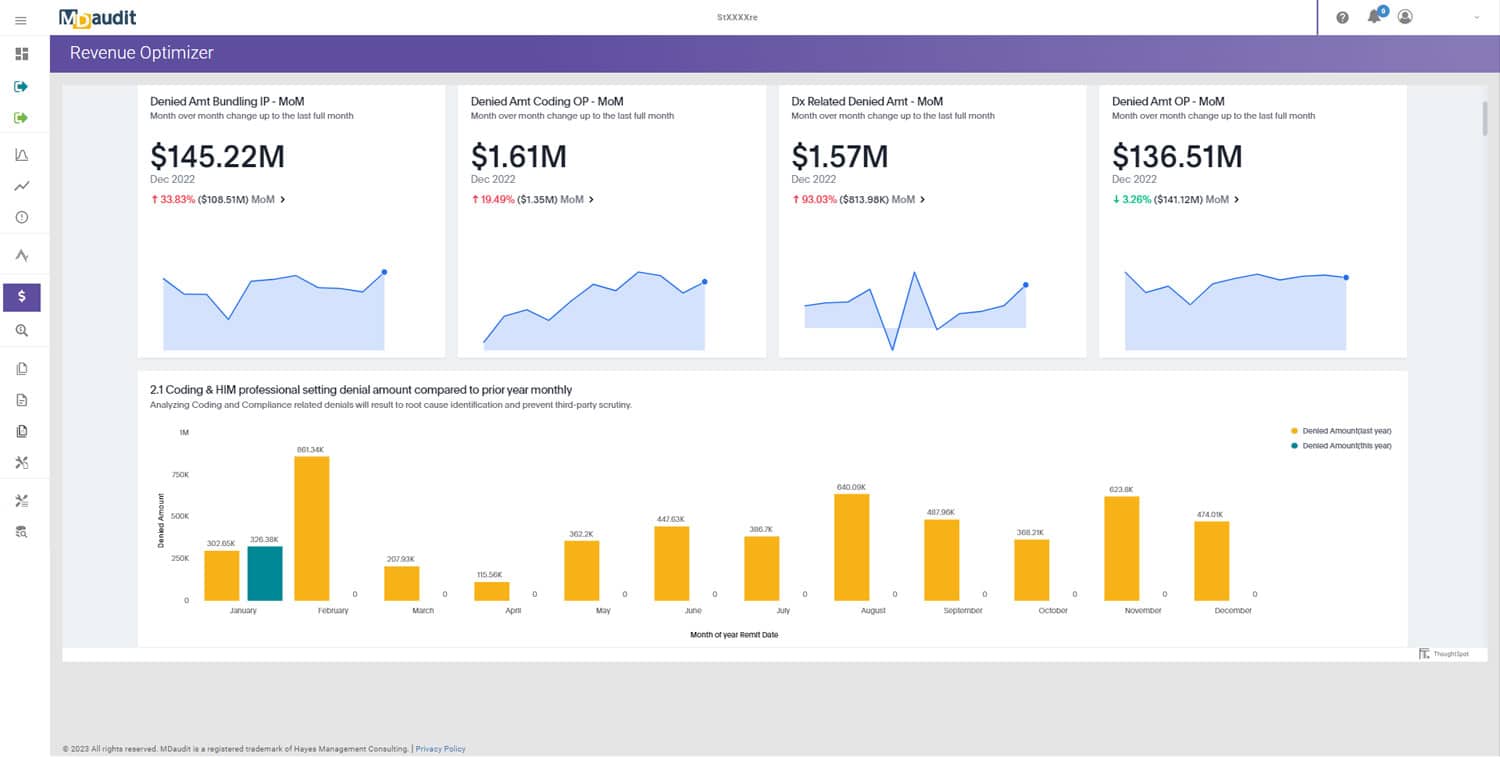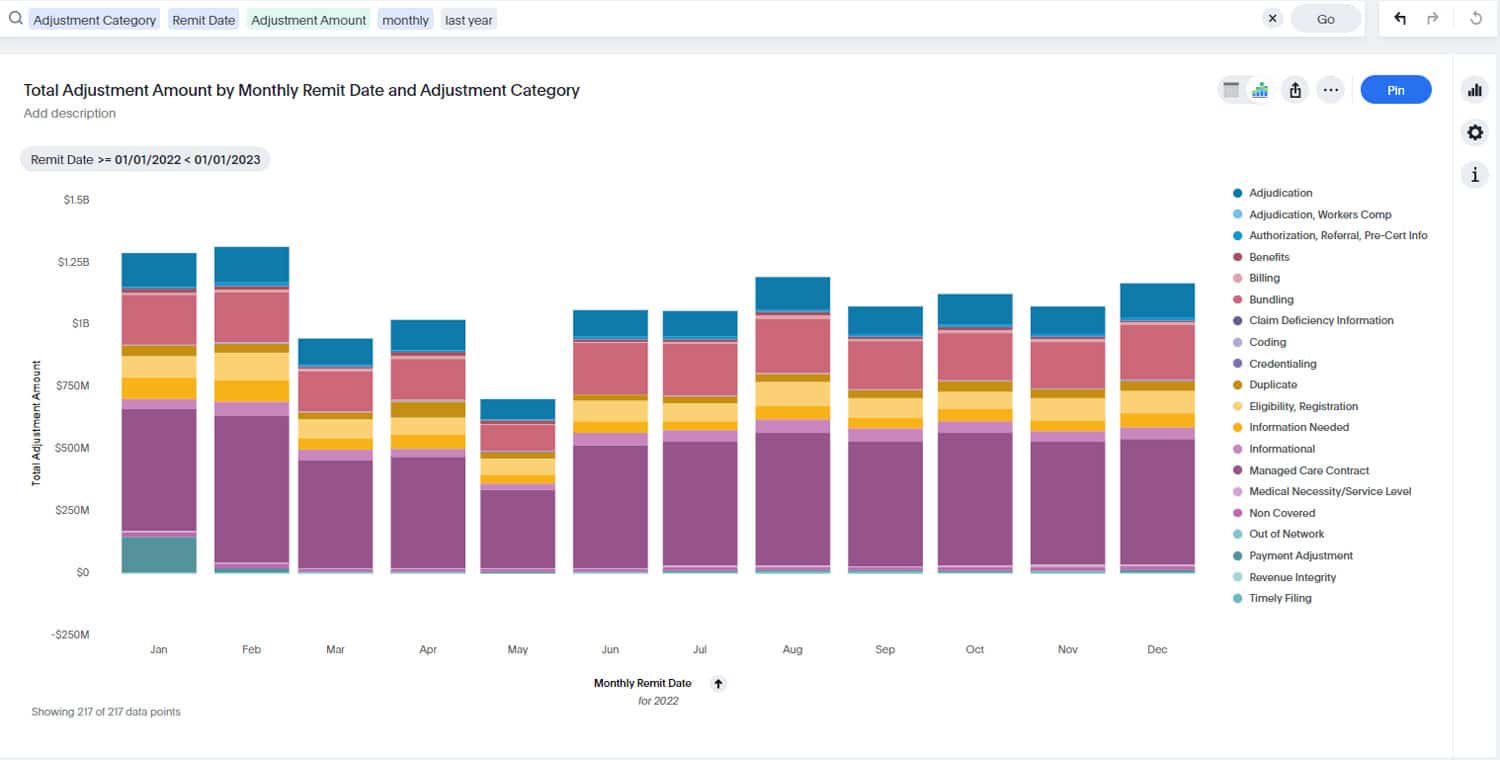Prior authorization (PA) has evolved from a simple administrative task into one of the most consequential levers in the healthcare revenue cycle. As payers expand requirements and automate their own claim-screening tools, even small lapses in authorization management can trigger costly denials. Each denied claim reverberates through the organization—consuming staff hours, delaying cash flow, and eroding confidence among clinicians and revenue leaders.
At MDaudit, we believe PA challenges are not just operational but analytical. Denials rarely occur because of a single human error. They are systemic—driven by patterns that can be measured, predicted, and prevented. By applying prior authorization analytics, healthcare organizations can identify where risk originates, anticipate payer behavior, and act before denials ever occur.
The Growing Pressure Around Prior Authorization
Why authorization denials persist
Despite heavy investment in pre-certification teams and EHR alerts, prior authorization denials remain among the top three denial categories across the industry. The root causes are familiar—missing approvals, expired authorizations, and mismatched documentation—but the frequency is rising because of:
- Complexity of payer rules: Each payer and plan defines its own list of services requiring authorization, often with unique time windows or diagnosis criteria.
- Expanding review scope: Payers are moving beyond high-cost procedures into everyday imaging, therapy, and pharmacy services.
- Dynamic policy drift: Updates to clinical guidelines or plan policies can invalidate older authorizations retroactively.
- Fragmented workflows: When authorization data resides in separate scheduling, EHR, and billing systems, visibility breaks down.
The financial and compliance cost
Each denied claim costs an estimated $25–$118 in rework and can delay cash for weeks. For hospitals managing thousands of authorizations monthly, the revenue impact reaches millions. Beyond cost, recurring authorization errors can expose organizations to compliance audits, payer scrutiny, and lost patient trust when services are unexpectedly postponed.
What Prior Authorization Analytics Really Means
Turning data into foresight
Prior authorization analytics aggregates authorization, denial, and claim data across systems to reveal patterns of failure. It connects the dots between payer behavior, service type, and documentation quality to forecast where authorizations are most likely to fail.
Core data elements
Effective analytics depends on normalized, structured data that captures:
- Payer, plan, and line of business
- Service and CPT codes
- Diagnosis codes and clinical indicators
- Provider and facility information
- Dates of authorization requests and approvals
- Denial reason codes
- Documentation and order completeness metrics
When these elements are standardized, leaders can begin identifying outliers and root causes.
From descriptive to predictive
Traditional reporting answers what happened. Predictive PA analytics answers what will happen next by modeling risk scores for each pending or submitted authorization. These models weigh historical denial patterns, payer mix, and provider behavior to anticipate where failures are likely.
For example, if a payer consistently denies certain cardiac imaging requests when supporting clinical notes omit functional test results, the model can alert teams before submission.
How MDaudit Helps Automate PA Analytics
MDaudit connects authorization intelligence directly into compliance and revenue integrity workflows. Using Billing Risk Analytics, organizations can monitor systemic patterns that link authorization lapses to specific payers, providers, or services.
Through Audit Workflows, risk alerts automatically trigger pre-submission review tasks or education assignments. The combination of automation and analytics transforms prior authorization management from manual tracking into a closed-loop control system.
AI at MDaudit applies machine learning to surface authorization patterns across payer networks, enabling organizations to move beyond exception management toward proactive prevention. (Learn more about AI at MDaudit).
Building a Prior Authorization Analytics Program
Step 1: Establish a unified data environment
Integrate data from scheduling, utilization management, and billing systems into one analytic platform. This consolidation enables tracking from authorization requests through denial resolution.
Step 2: Classify and prioritize risk
Categorize authorization denials into root causes such as “authorization not obtained,” “authorization mismatch,” or “documentation invalid.” Prioritize categories that account for the largest dollar loss or volume.
Step 3: Develop predictive risk scores
Use historical trends to calculate risk scores by service type, payer, or department. Assign higher review priority to high-risk requests, allowing staff to focus where intervention matters most.
Step 4: Embed analytics into daily workflows
Analytics must be visible and actionable. Embed dashboards into staff work queues, or configure alerts that surface within pre-bill workflows. Teams should not need to search for insights—they should flow naturally into their existing process.
Step 5: Create continuous feedback loops
After each denial or successful authorization, feed that outcome back into your model. Over time, the algorithm refines itself to reflect evolving payer rules and provider behaviors.
Translating Insights into Action
Provider and coder education
When analytics identify recurring documentation deficiencies, link those findings to education through the MDaudit Coder Workflow. For instance, if certain denials stem from incomplete order notes or missing diagnoses, develop targeted provider sessions that address the gap.
EHR and template optimization
Adjust EHR templates to prompt for required details when high-risk procedures are ordered. Automated prompts for medical necessity statements or attached test results can prevent missing documentation before requests go out.
Contract and payer engagement
Use aggregated authorization data to negotiate with payers. Demonstrate compliance performance and challenge unnecessary PA requirements using measurable evidence.
Integrating Revenue Integrity (RI)
Authorization analytics should not exist in isolation. Link it to the organization’s broader revenue integrity program so that authorization risk, denial management, and audit insights share the same operational foundation.
Case Studies in Predictive Authorization Management
Multi-Hospital Health System
A large health system used predictive models to flag outpatient imaging and infusion services with high PA denial probability. By routing those requests to an enhanced clinical review queue, the organization reduced denials by 43% and shortened average turnaround time by two days.
Academic Medical Center
An academic medical center correlated denials with payer-specific time window violations. By aligning scheduling and utilization teams through automated alerts, expired authorizations dropped 35%, saving an estimated $1.6 million annually.
Specialty Group Practice
A specialty group identified repeat denials from one payer requiring explicit test result documentation. After adjusting EHR templates and training providers on new policy wording, first-pass authorization approvals rose from 78% to 92% within three months.
Measuring Impact and Maturity
Key performance indicators
- Authorization approval rate
- Denials attributed to missing or invalid authorizations
- Time to authorization approval
- Average staff touchpoints per authorization
- Rework hours per denial
- Cost avoidance and recovered revenue
Track these metrics monthly and tie them to staff productivity, payer relations, and compliance reporting.
Program maturity levels
- Reactive: Tracking only after denials occur.
- Descriptive: Reporting on past performance by payer or service line.
- Predictive: Using models to flag high-risk requests before submission.
- Prescriptive: Automating preventive action and education loops based on analytics.
Most organizations sit between levels 2 and 3—MDaudit’s platform enables the shift to level 4.
Governance and Compliance Considerations
Data transparency
Every authorization decision must be traceable from data source to action. MDaudit’s Data Transparency ensures every analytic model and decision can be audited, supporting compliance with payer and federal standards.
Security and privacy
Authorization records contain sensitive PHI and payer data. Data Security practices such as encryption, secure role-based access, and audit logging protect this information as it moves through analytic systems.
Executive oversight
Establish regular governance meetings that review authorization metrics, model performance, and payer trends. Assign accountability for ongoing model validation and cross-functional process improvements.
Future Trends in Authorization Intelligence
The evolution of AI-driven revenue integrity is making real-time authorization insight possible. Predictive models will soon integrate directly with clinical decision support tools, alerting clinicians during order entry if an authorization risk is detected.
Advanced systems are also beginning to factor in payer behavior drift—detecting when approval criteria quietly shift and adjusting risk models automatically. As automation expands, human expertise will shift toward exception management and payer collaboration rather than manual follow-up.
Through responsible AI design and transparent analytics, organizations can prevent payer denials while preserving compliance and trust. MDaudit continues to pioneer these capabilities, helping healthcare teams operationalize intelligence without adding complexity.
For further insights, explore our Case Studies and White Papers highlighting real-world outcomes from analytics-enabled compliance programs.
The Path Forward
Prior authorization will never disappear, but its burden can be reduced dramatically through analytics, automation, and continuous feedback. Predictive insights transform PA from a transactional task into a strategic advantage.
By operationalizing prior authorization analytics—supported by unified data, AI-driven prediction, and integrated workflows—organizations can ensure that the right services are approved the first time, every time. The result is a stronger revenue integrity posture, fewer denials, and more time for patient care.







